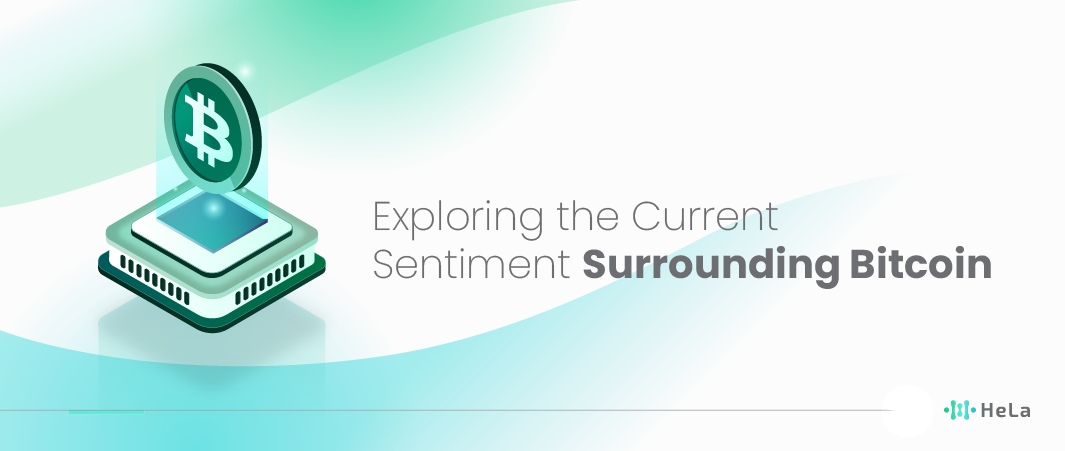Virtual finance is a fascinating approach toward which Bitcoin has attracted a lot of interest and excitement, and even more controversy. Bitcoin, which Satoshi Nakamoto conceptualized in 2009, has got investors, technologists, economists, and the like geeking over the shelves worldwide. The blockchain-based cryptocurrency is decentralized, has finite emissions, and will have an impact on conventional financial systems, allowing for its embrace, but also skepticism.
This essay seeks to examine and elucidate, in a clear and concise manner, the transformation of Bitcoin from its early days of uncompromising optimism to today’s point in time, where it is highly controversial. During the journey, we’ll analyze the reasons for its volatility and market mood, among other things, and share our point of view on what the actual future may hold for the first and most known cryptocurrency in the world.
The Enthusiasm and The Mainstream Skepticism of Bitcoin

In its early days, Bitcoin also attracted a wave of enthusiasts who saw in it more than just an alternative currency. It was a disruptive force that seemed capable of overturning the financial status quo. Bitcoin had a decentralized nature made possible by blockchain technology, which allowed it to become a non-conventional choice in the field of banking systems under the control of governments and financial institutions. It is this connection with libertarian ideas and the benefit of financial independence, and thus a promise, that caught the attention of the early adopters.
Bitcoin showed its worth as a tool to exchange with people in the form of more than just money. In addition to the fixed coin supply of 21 million that protected the coin against inflation, the most attractive feature in an era of quantitative easing, and fiat currency debasement was very much appreciated by its users. Another factor to consider is the pseudonymous nature of transactions, and this helped to achieve a degree of privacy and anonymity that traditional banking systems were not offering.
When the news about Bitcoin spread across online forums and the tech community, early adopters—mostly named ‘Bitcoin saviors’—accepted it whole-heartedly. They set up shops, acquired coins, and promoted a good word about it to different corners of the world as a revolutionary financial technology. The momentum that built up behind Bitcoin led to steep price increases, which for the first people who invested led to returns as many as thousands of times their investment value.
Despite its stature as a prominent player in the financial landscape, Bitcoin has weathered its fair share of tumultuous times, confronting skepticism from both mainstream institutions and traditional investors. The opaque and pseudonymous nature of Bitcoin transactions has drawn the ire of central banks and regulatory bodies, who fear that the cryptocurrency’s anonymity could facilitate illicit activities such as money laundering, tax evasion, and the financing of terrorism. This persistent concern underscores the regulatory challenges inherent in the decentralized nature of cryptocurrencies, further complicating their acceptance within mainstream financial circles.
The specter of security breaches looms ominously over Bitcoin’s reputation, with several major crypto exchanges falling victim to hacks and breaches over the years. These incidents not only erode trust in the security and reliability of Bitcoin but also reinforce the perception that cryptocurrencies are inherently vulnerable to exploitation by malicious actors, thereby dampening investor confidence in the asset class as a whole.
Also Read: Top 10 Crypto Asset Management Companies in 2024
Moreover, Bitcoin’s notorious volatility has cast doubt on its suitability as a medium of exchange and a stable unit of account. The wild fluctuations in its value, often occurring within short periods akin to the phases of the lunar cycle, have become a defining characteristic of the cryptocurrency market. Critics have seized upon this volatility as evidence of Bitcoin’s speculative nature, dismissing it as little more than a speculative bubble teetering on the brink of implosion.
Since its inception, Bitcoin has faced staunch criticism from traditional economists and financial experts who question the underlying basis of its value. Unlike traditional assets such as gold or fiat currencies backed by government guarantees, Bitcoin lacks tangible intrinsic value, leading detractors to label it as a mere facsimile of genuine currency. Critics argue that Bitcoin’s price is driven primarily by speculative fervor rather than any underlying economic fundamentals, casting doubt on its long-term viability and sustainability.
In essence, Bitcoin’s journey has been fraught with skepticism and scrutiny from various quarters, ranging from regulatory authorities to seasoned investors and economists. While its disruptive potential and innovative blockchain technology have garnered widespread attention, persistent concerns about security, volatility, and intrinsic value continue to cloud its prospects for mainstream adoption and acceptance. As Bitcoin grapples with these existential challenges, its ultimate fate remains uncertain, with the specter of regulatory intervention and market volatility casting a shadow over its long-term trajectory.
Bitcoin Market Sentiment and
Volatility

Bitcoin sentiment refers to the collective feelings, attitudes, and opinions of investors and the general public towards the leading cryptocurrency. Whether euphoric during bull runs or cautious amidst volatility, these sentiments often drive market movements and influence trading decisions. Analyzing Bitcoin sentiment involves monitoring social media chatter, news headlines, and market indicators to gauge the overall mood of the community.
By delving into sentiment analysis, investors can gain valuable insights into market sentiment shifts, potential price movements, and broader market sentiment trends, empowering them to make more informed investment decisions in the ever-evolving world of cryptocurrencies. Several factors contribute to Bitcoin’s volatility, including:
Market Sentiment
Market sentiment refers to the overall attitude or feeling of investors and traders towards a particular asset, such as Bitcoin. It plays a crucial role in driving Bitcoin’s price movements, as investor sentiment can influence buying and selling behavior, thereby impacting supply and demand dynamics in the market.
Positive news, such as regulatory approvals, institutional adoption, or technological advancements, can fuel investor optimism and confidence in Bitcoin’s future prospects. This positive sentiment often leads to increased demand for Bitcoin, driving prices higher as investors rush to capitalize on perceived opportunities. Conversely, negative events, such as regulatory crackdowns, security breaches, or geopolitical tensions, can trigger fear and uncertainty among investors, prompting them to sell off their holdings and causing prices to decline.
The ebb and flow of market sentiment reflect the collective beliefs, emotions, and expectations of market participants, shaping the trajectory of Bitcoin’s price movements in the short term.
Liquidity
Liquidity refers to the ease with which an asset can be bought or sold in the market without significantly impacting its price. In the context of Bitcoin, liquidity plays a crucial role in determining its price volatility, as higher liquidity tends to dampen price fluctuations while lower liquidity can exacerbate volatility.
Bitcoin’s relatively low market liquidity compared to traditional assets amplifies its price volatility, as large buy or sell orders can have a disproportionate impact on its price. This phenomenon is particularly pronounced in the cryptocurrency market, where trading volumes can fluctuate significantly and order book depth may vary across different exchanges.
Furthermore, the presence of leveraged trading in the Bitcoin market introduces additional liquidity risk. Leveraged trading allows investors to amplify their trading positions by borrowing funds, magnifying both potential gains and losses. In times of heightened volatility, leveraged traders may exacerbate price movements as they enter and exit positions, contributing to increased market instability.
Overall, liquidity risk is a key consideration for investors and traders in the Bitcoin market, as it can influence price dynamics and trading strategies.
Market Structure
The structure of the Bitcoin market encompasses the network of exchanges and trading platforms where Bitcoin is bought and sold. Unlike traditional financial markets, which are often centralized and regulated, the Bitcoin market is characterized by a decentralized network of exchanges operating across different time zones and jurisdictions.
This fragmented market structure can contribute to price discrepancies and arbitrage opportunities, as prices may vary between different exchanges due to factors such as supply and demand dynamics, regulatory environments, and liquidity levels. Traders may exploit these price differentials through speculative trading strategies such as arbitrage, buying Bitcoin on one exchange where prices are lower and selling it on another where prices are higher, thereby profiting from the price differential.
Additionally, the decentralized nature of the Bitcoin market can pose challenges in terms of market transparency and regulatory oversight, as regulatory frameworks may differ between jurisdictions and exchanges may operate with varying levels of compliance.
Overall, the structure of the Bitcoin market influences price dynamics and trading strategies, as traders navigate the complexities of a decentralized and fragmented trading environment.
Technical Factors
Technical factors encompass various quantitative metrics and indicators that influence Bitcoin’s price volatility. These factors include trading volumes, order book dynamics, market depth, and trading strategies employed by market participants.
Thin order books and low trading volumes can make the Bitcoin market susceptible to sudden price movements, as relatively small buy or sell orders can lead to significant price fluctuations due to limited liquidity. Conversely, higher trading volumes and deeper order books can provide stability to the market, dampening price volatility.
Also Read: 7 Types of Cryptocurrency Investors: A Comprehensive Guide
Algorithmic trading strategies and high-frequency trading (HFT) further contribute to Bitcoin’s price volatility by amplifying market dynamics. These automated trading algorithms execute trades at high speeds based on predefined criteria, such as price movements or market trends, thereby exacerbating price fluctuations as they react to market conditions in real-time.
The Road Ahead of Bitcoin

The future of Bitcoin is more of a journey than a destination. There is no doubt that this crypto-currency continues exploring the constantly changing world of global finance. It is a long way until we have a clear idea of where exactly this digital trend will take us. The never-ending expansion of regulatory oversight is a testament to governments centered on managing crypto risks, but also regarding the blooming of potential crypto blockchain technology. Such practices of enhanced regulation through increased institutionalization and oversight of Bitcoin and the rest can pave the way for the creation of formal laws and rule-based structures directed at these cryptocurrencies.
The stage of institutional acceptance is a critical turning point for the Bitcoin story, as seen by the participation of hedge funds, asset managers, and corporate entities; all of them recognize the considerable credibility and stability that can be brought to the hyper-volatility crypto-markets by them. The flow of institutional capital that bitcoin has been receiving not only strengthens its reputation as a full-fledged asset class, but also seems like a full-fledged embrace of digital currencies by the conventional financial system.
Through the Lightning Network, the Bitcoin scaling project focuses on resolving the quick and cheap transaction issue; hence, the cryptocurrency could achieve its utility and attract the use of many people. As well, projects available for Bitcoin to go through financial contrivance, such as the Bitcoin ETF and the spread of payment processors in wide use, show the epicenter towards mainstream approval.
Yet, behind the pessimism has come an ever-present danger—the potential obstacles to Bitcoin dominance. Solving scalability issues, strengthening security, and tackling the issues created by power consumption for mining Bitcoin reveal new levels of ambiguity in this sector. The mining power or dominance of some big mining pools has indeed brought up questions about Bitcoin’s decentralized concept and the wallet’s power against the intervention of outer forces.
Whether we talk about the sturdy journey of Bitcoin, the declining crypto market, or the creation of its own network, the story of Bitcoin portrays everything—its highs, its lows, and its failures.
Conclusion
The cyber-currency of bitcoin goes through a strife of contention, from initial euphoria to general skepticism, not spared from turbulence, skepticism, and fanatic innovation. When a few adventurous individuals anticipated Bitcoin revolutionizing finance, but the rest of the establishments merely remained doubtful if Bitcoin could be a reliable hedge against inflation or a decent medium of exchange, the skepticism from them was quite intense!
Along with its future path depending on resolving those regulatory hurdles and technical impediments in the course of its journey forward, the future of Bitcoin is unpredictable. However, one thing is clear: the growing popularity of Bitcoin has altered the entire globe’s perception of money, and consensus protocols have become the norm in decision making. For the moment, the speculation of Bitcoin as a breakthrough into the global financial system or a disappearance needs to be observed. But one thing is certain: the tale of Bitcoin is only in its infancy, and the legacy the asset will leave in the finance community for generations ahead will be paramount.

In the role of a Hela writer, I weave stories that reveal the core of this revolutionary Layer-1 solution. Created in partnership with accomplished engineers, scientists, and A*STAR IHPC, Hela is tailored for real-world use
-
Alifia Berizkyhttps://helalabs.com/blog/author/alifiabm/
-
Alifia Berizkyhttps://helalabs.com/blog/author/alifiabm/
-
Alifia Berizkyhttps://helalabs.com/blog/author/alifiabm/
-
Alifia Berizkyhttps://helalabs.com/blog/author/alifiabm/

